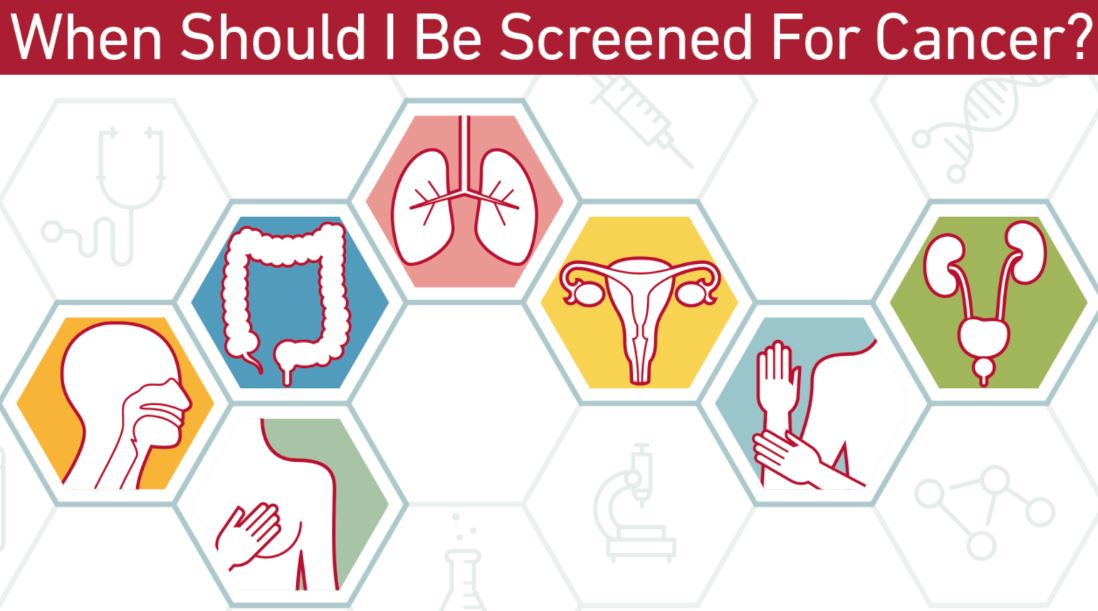Getting recommended cancer screenings can help spot cancer in the earliest stages when treatment is most likely to work.1
However, some significant barriers can keep people from getting recommended cancer screenings, including a lack of awareness or time, high costs, inadequate access, and fear of what the screenings might entail or reveal.
Here are some of the most common barriers to cancer screenings and what you can do to overcome them.
Lack of Awareness
One reason people don’t get recommended cancer screenings is that they simply don’t know they should. Recommendations for who should be screened and when can change as new research or technologies become available.
Having a primary care provider that you see fairly regularly—for example, for routine check-ups or when you’re sick—gives them an opportunity to let you know about any screenings you should get or changes to screening recommendations that affect you.
In addition to seeing your primary care provider, you can learn more about cancer screenings through the U.S. Centers for Disease Control and Prevention (CDC).
Lack of Time
Screenings can be time-consuming. While the procedures themselves might only take 30 minutes or so to complete, that doesn’t include how long it might take you to get to and from the clinic or hospital, fill out the necessary paperwork, prepare for or recover from the procedure, or talk to your healthcare provider about the results.
It can feel like a big time commitment, particularly if you’re trying to juggle multiple priorities on a tight schedule. It might be hard to reduce the amount of time you spend undergoing a particular procedure, but you could cut down on the overall time by taking a few easy steps:
- See if you can do the procedure at a location that is closer to your home or work or at one that offers more convenient hours.
- Ask what paperwork you can fill out and submit ahead of time to reduce the amount of time you spend in the waiting room.
- Request to go over the results via a telemedicine visit, if possible, as opposed to scheduling a follow-up appointment in person.
- If your healthcare provider is recommending multiple screenings, ask if they can be done on the same day and at the same location to reduce the amount of time you’re away from your other responsibilities.
Remember, preventive healthcare saves you time in treating a possible disease in the long run. For instance, early cancer tends to have a much shorter treatment than advanced cancer.
Costs
The costs associated with cancer screenings can be too high for some individuals to afford, especially for those without health insurance.
Because cancer screenings are a preventive care benefit, most health insurance plans in the United States cover the costs of many cancer screening procedures without any cost-sharing (ex. a copay or coinsurance), even if you haven’t met your deductible.
Also, it’s possible that cancer treatment will cost less the earlier it is found, because it can be treated more quickly than advanced cancer.
But without health insurance, prices for cancer screenings can vary widely depending on the procedure or location, and can cost up to hundreds of dollars out of pocket.
When you tack on other expenses associated with getting screenings—such as transportation costs, child care costs or lost wages because you’ve missed work—some people might worry they’re too expensive to pursue.
Reducing out-of-pocket costs for some cancer screenings like mammograms is an effective way to increase the number of people who get them.2 For this reason, some organizations, health departments, and government agencies offer cancer screening tests at low or no cost for certain individuals.
If you aren’t sure you can afford the cost of a recommended screening, ask your healthcare provider or local health department what programs or services might be available in your area.
Lack of Access
Some might forgo cancer screenings because they’re not accessible—either because there are no options available in your area or because the ones that are available are inadequate.
Many rural areas, especially in the U.S., don’t have enough medical providers to go around. As a result, adults often have to drive hours round trip to see a primary care doctor and sometimes even further to see a specialist. For adults without adequate transportation, the distance can make getting screenings out of the question.
But even when a medical provider is geographically accessible, they still might not be adequately equipped or willing to meet the needs of the patient.
For example, if a provider doesn’t speak the same language as the patient, they might not always use a medical interpreter or translation service when interacting with them.
Even if they do speak the same language, they might exhibit biases that make patients feel like they’re not receiving high-quality or the most appropriate care. Those experiences could reduce the quality of interactions and lead some to avoid medical providers as much as possible, including for cancer screenings.
Overcoming this barrier can be challenging and often is largely outside of the patient’s control. That said, there are some imperfect solutions you could try:
- If you’re in a very rural area, you can ask your healthcare provider or call your local health department to see if there are options closer to home or services available to help you with transportation to and from the cancer screening appointment.
- If you’re unable to communicate with your practitioner, you (or a loved one on your behalf) could request that the healthcare provider use a medical interpreting service whenever they talk with you during your appointment.
- If you feel the medical provider has biases that prevent them from offering you quality care, ask friends or relatives for recommendations of other providers they’ve had positive experiences with. It is illegal for healthcare providers to have a bias towards patients. Healthcare providers expressing discrimination should be reported to state medical board.
Contact leaders at the healthcare facility to tell them about any negative experiences you had there, as well as encourage them to take steps to ensure their staff better reflect and respect their patient population.
Fear
While there are many benefits to getting recommended cancer screenings, fear can be a powerful deterrent. Some might be worried about the procedures themselves, fearing they’ll be painful or uncomfortable. Others might be afraid of getting a cancer diagnosis and all that would entail.
Regardless of your reasons for feeling afraid, your healthcare provider could help you better understand how realistic those fears might be or how they could be managed.
For example, if you’re concerned about pain, your practitioner could let you know how much discomfort is typical and what your options are for reducing it.
If you’re worried about being diagnosed with cancer, your healthcare provider could explain the benefits of earlier diagnosis (if one would come at all) and how they might compare to the risks of waiting.
A Word From Verywell
There are a lot of reasons people avoid cancer screenings, but many of these worries or challenges can be overcome with a little communication, preparation, and planning.
Talk to your healthcare provider about any questions or concerns you may have about your cancer risk, as well as challenges you might be experiencing getting screened.
Loved ones can also be a great source of logistical or emotional support to help you access the screening tests you need.

